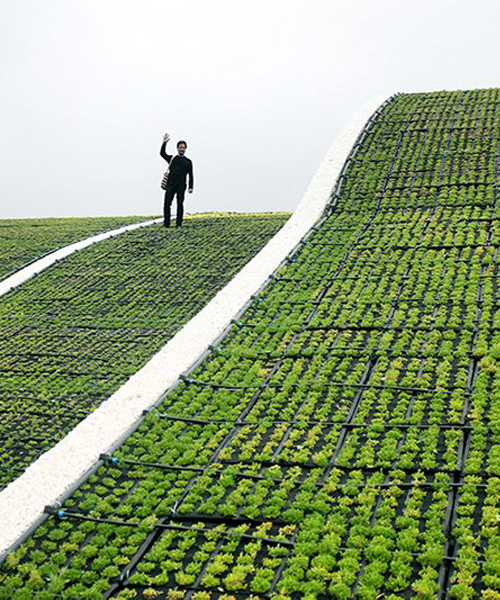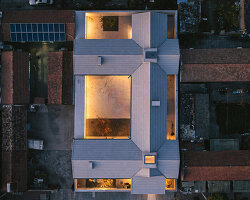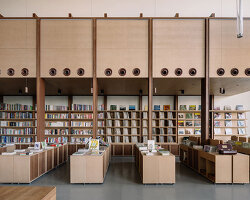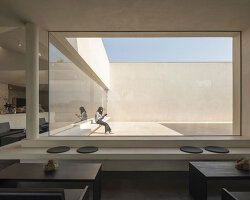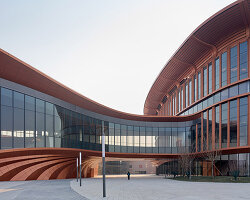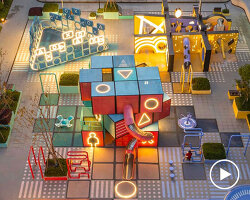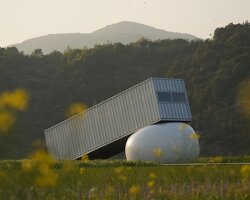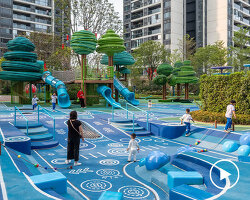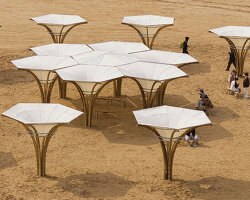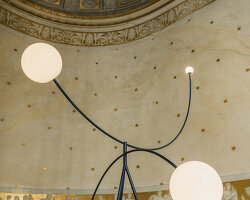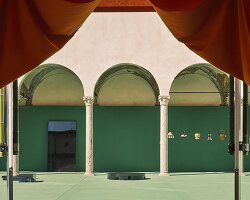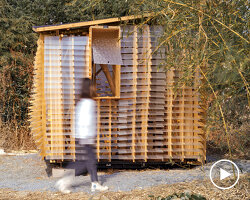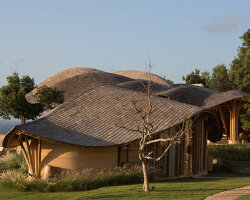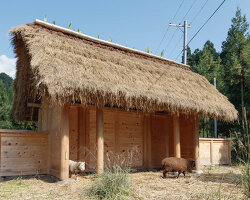in the yanqing district of beijing, studio cardenas conscious design has created a contemporary garden pavilion that showcases the potential of bamboo. designed for international bamboo and rattan organization (INBAR), the structure of bamboo eye melts into the landscape to create one single, curved element.

the pavilion integrates with the landscape
image by pan zhenyu for studio cardenas conscious design
the client, INBAR, is a multilateral development organization that promotes environmentally sustainable development using bamboo and rattan. with this in mind, the team began the design process by first considering how best to represent the organization. the final building is based on a contemporary interpretation of the traditional garden pavilion by fusing the new intervention into the surrounding greenery. furthermore, the structure, which detaches the garden soil from the ground, is made of natural round pole bamboo in 32-meter span arches: a perfect example of the natural material pushed to it’s maximum performance.

INBAR garden pavilion front aerial view
image by pan zhenyu for studio cardenas conscious design
the ceiling is made of handmade bamboo weaving, a traditional chinese handcraft applied to large-scale buildings. this aims to provide a familiar and welcoming atmosphere for local people. the interiors and finer decoration are also made of bamboo and rattan.

called the ‘bamboo eye’ due to the reflection of the main façade on the water
image by pan zhenyu for studio cardenas conscious design
the sustainability strategy of the INBAR garden pavilion is based not only on the use of tangible materials (bamboo, soil, plants, bamboo plants, water, pebbles) but also through the use of intangible materials such as natural light, natural ventilation and acoustic control. with no air conditioning, together with the limited use of artificial light, the design of bamboo eye achieves minimum consumption of non-renewable energy.

the building is an example of contemporary architecture using bamboo
image by pan zhenyu for studio cardenas conscious design

the green roof is part of the temperature control strategy
image by CBC for studio cardenas conscious design

materials, form and proportion were the tools used to design an effective and respectful, contemporary, and sustainable architecture
image by studio cardenas conscious design

the project marks the largest bamboo structure in northern china
image by pan zhenyu for studio cardenas conscious design

the structure uses more than 5000 natural bamboo poles
image by pan zhenyu for studio cardenas conscious design
project info:
project name: INBAR garden pavilion
location: 2019 beijing international horticultural exposition, yanqing district, beijing, china
client: INBAR – international bamboo and rattan organization
design: studio cardenas conscious design / mauricio cardenas laverde
designboom has received this project from our ‘DIY submissions‘ feature, where we welcome our readers to submit their own work for publication. see more project submissions from our readers here.
edited by: lynne myers | designboom
